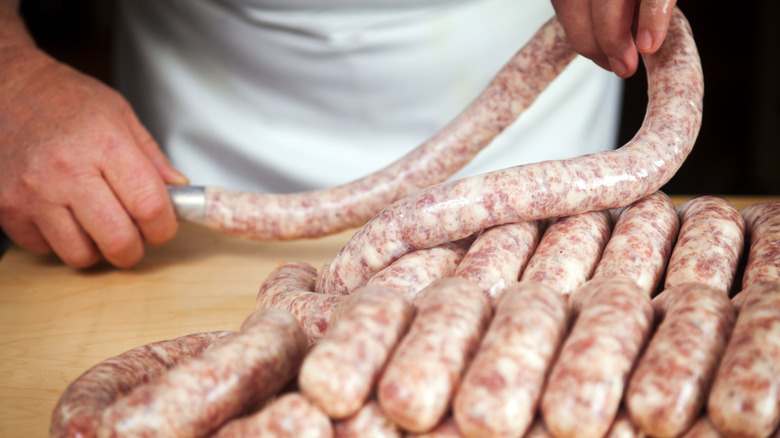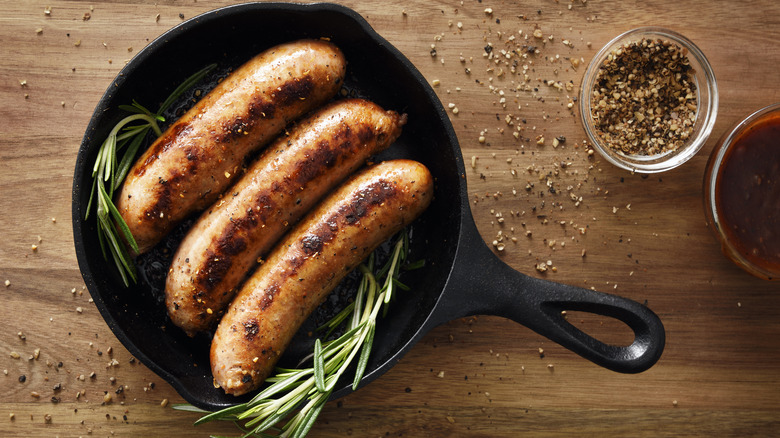For Tender Homemade Pork Sausages, Never Skimp On One Ingredient
If you're making pork sausages at home, no matter whether it's German-style grilled bratwurst, spicy-or-sweet herby Italian sausage, or herby, succulent breakfast sausage, there's one ingredient you're going to need a good amount of. And health-conscious cooks may not be pleased to hear about it: Fat.
Realistically, this advice isn't just for pork sausages, but for any kind of sausage. Fat plays a few different roles in this kind of recipe — it adds flavor and makes the end product juicy and tender to the bite. It's also useful for binding everything together so the sausage doesn't end up crumbly. If you try to avoid putting fat in there, chances are your homemade sausages will end up unpalatably dry and potentially tough or chewy.
When making sausages at home, you can add fat separately to the meat (that is, you don't need to go for a fatty cut of meat to ensure that juiciness and flavor), and it's necessary if you're working with lean meat. Pork fat is a wise choice, since it has a low melting point that carries flavor better when it's cooking. It's also neutrally flavored — options like lamb or goat fat can work too, but will add a distinctive flavor that may not always work with your recipe. Beef fat is a possibility, but not everybody loves the yellowish color that it can impart.
How to incorporate fat into sausages
Whether you need to add fat to your sausage recipe depends on a couple of factors — whether you're starting out with lean or fatty meat, and how much fat content you want. You can go anywhere from 20% fat up to 50% (there's no "right" amount; it really comes down to personal preference). If you're working with pork that's already, say, 20% fat, you may not need to add any at all. This can make life easier and may be why some recipes recommend using a high-fat cut of pork, or fatty ground pork.
If you're making sausages with a meat grinder (from which you'll squeeze the sausage into a natural or synthetic sausage casing), the fat will go into the grinder along with the meat. You want the fat to go into the grinder in a solid (that is, not melted or goopy) form. For this reason, it might be smart to leave it in the refrigerator or even freezer until the point when you need to add it, so it doesn't have time to soften up. This is also considered to make for a smoother sausage that holds together, as room temperature, softened-up fat may not integrate so well and can cause the end product to fall apart. You can usually buy pork fat straight from a butcher — just ask for it.

